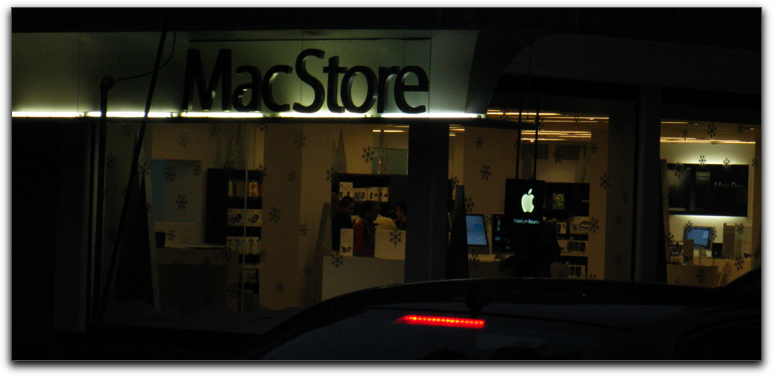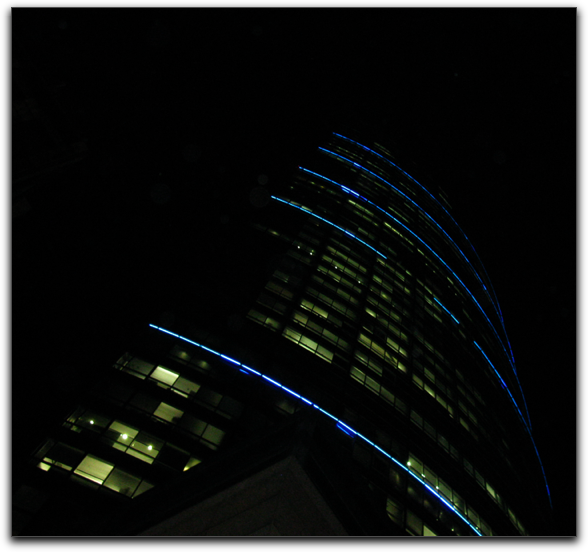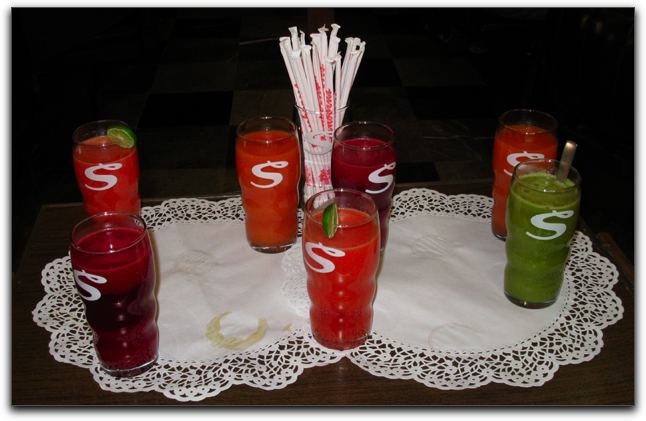
After breakfast we checked out the store a bit and noticed that they carry a number of chocolates, but we did not buy any. We had a mission, to get to as many of the museums downtown as we could… because they were closed the previous day.
On our way "home" from the Zócalo the previous night we had seen one street a couple blocks from the hotel with racks of sweaters, scarves, ponchos and other woven goods hanging up the side of a building. This morning we went back to buy a few items and then return the goods to the hotel before starting our day.
We walked through the Alameda to one of the buildings we had seen the previous evening, one with an amazing facade. We had read in one of the various guides (though there was no signage at all on the building itself) that you could get an excellent Mexican breakfast there… at the Sanborns café. We thought this was a rather unique, old authentic restaurant, only to learn through the rest of the day (and the next) that we were in a huge department store and that Sanborn cafés dot Mexico City (and maybe beyond). They had some amazing juices available and the food was quite tasty.

After breakfast we checked out the store a bit and noticed that they carry a number of chocolates, but we did not buy any. We had a mission, to get to as many of the museums downtown as we could… because they were closed the previous day.
Along our walk through the downtown streets we saw men and women of all ages standing in lines out the doors of liquor stores, we imagined stocking up for Christmas.
As we passed between the Cathedral and the Zócalo we passed the usual street-side venders. However we also saw an unusual, perhaps native ceremony. The (tourist?) couple stood with their eyes closed and held each others' hands and there was something inside those. Meanwhile the blond woman walked around them a number of times, blowing the smoke at them. The woman with the broom to their right (in the photo) played no role in the ceremony.
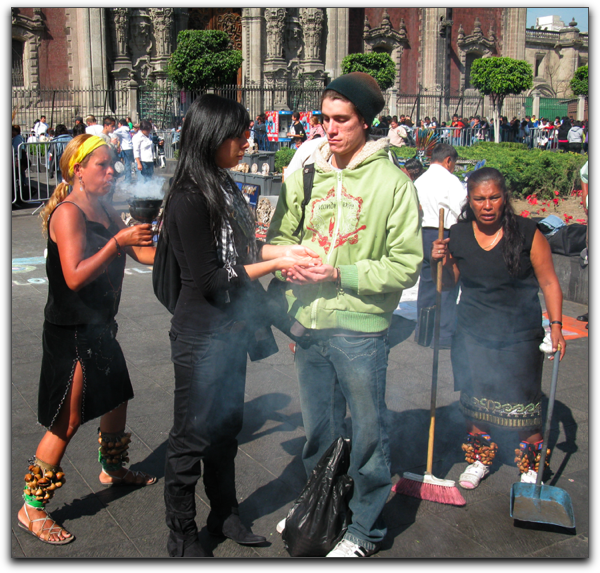
Continuing along that same street we came to an opening in the big building on our right where we saw a sign above indicating that it was the Museo Nacional. However, it was obvious from glancing in that construction was in process. We figured that this was not the entrance and continued to the end of the block where we asked the policemen standing there where we could find the entrance. They pointed us back to from where we had come, and so we returned… only to be told when we poked our heads in, that it was closed for construction.
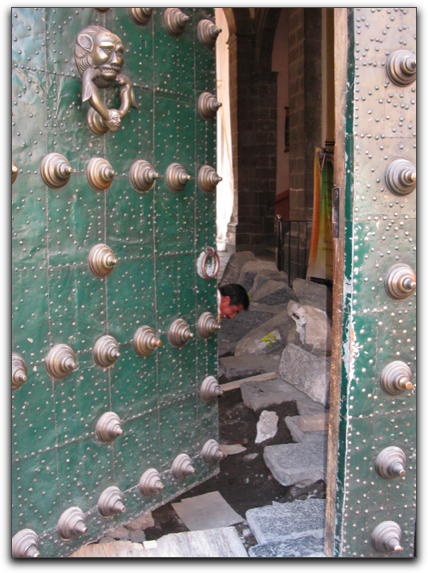
Scratch one museum off the list.
Luis had marked the existence of a couple of old synagogues near this area of town, so our walk swung us around to those. Along the way we saw this "Day of the Dead" type display. Luis had explained to us the origins of the Catrina character in Mexican culture, about which Mark was able to collect a number of photos of different manifestations. Nonetheless, we were a bit surprised by the prevalence of skeleton dolls, some rather beautifully dressed, at Christmas, a time of birth and new light.
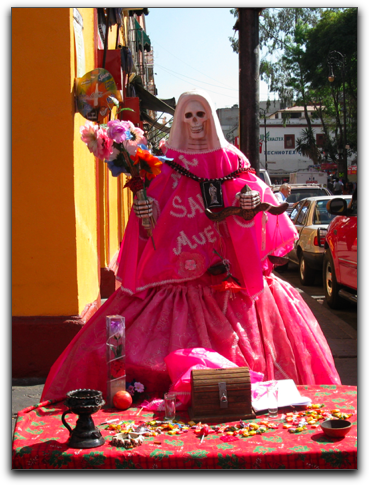
Beyond this and around another corner, we came to the street of the synagogues. One you don't go to (was closed with no indication of there being any attendant):
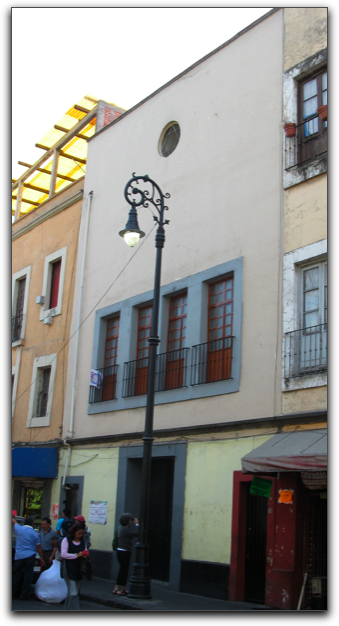
and one someone else doesn't go to:
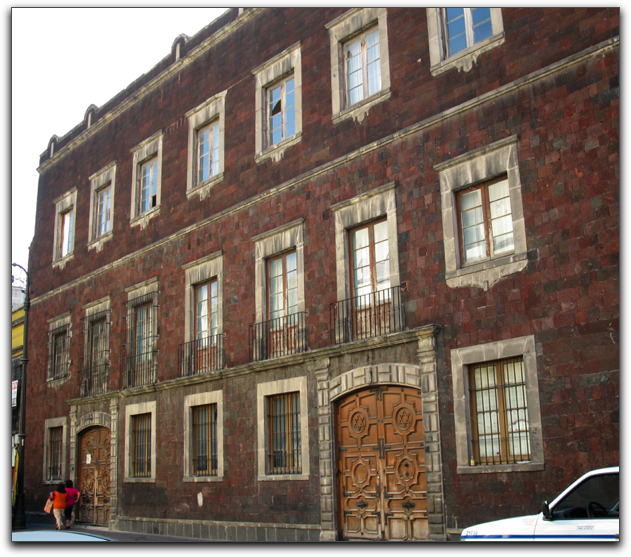
We happened to arrive at the moment that a couple of people opened the door and indicated that the building was closed for repair. But Mark was able to get a photo of the space inside the doorway nonetheless.
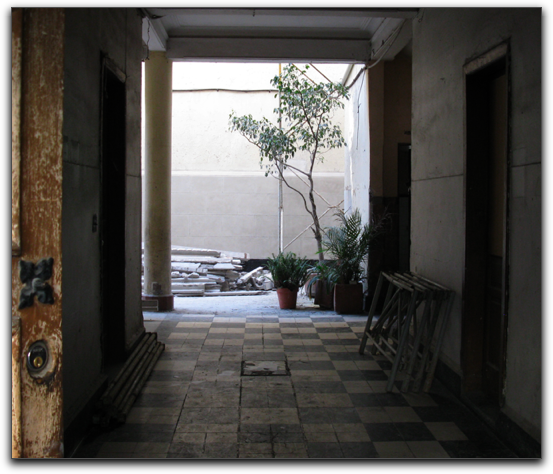
Scratch two synagogues (for a total of three) off the list. This was proving to be a quick morning for checking sites off our list.
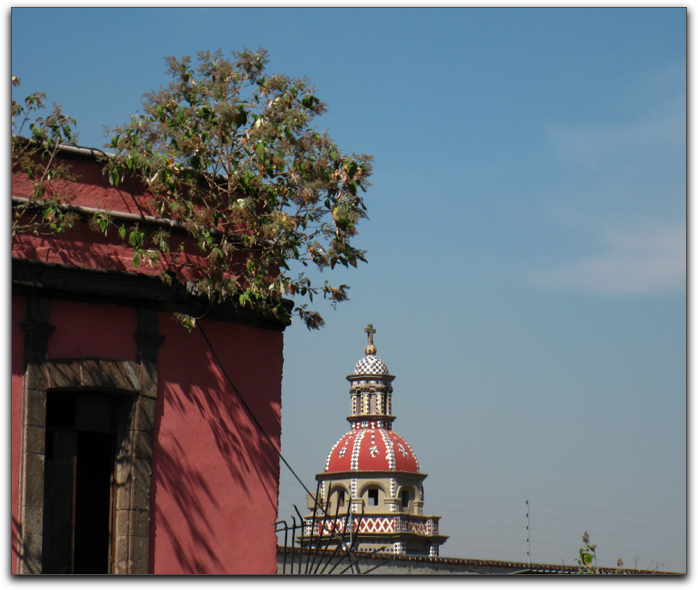
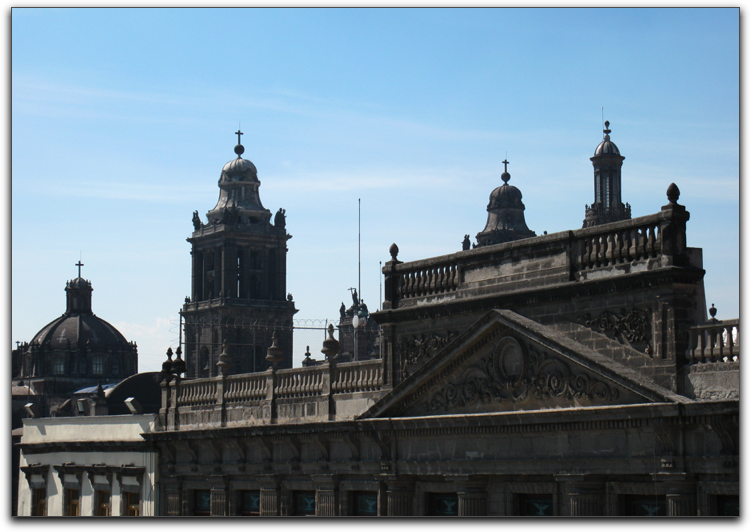
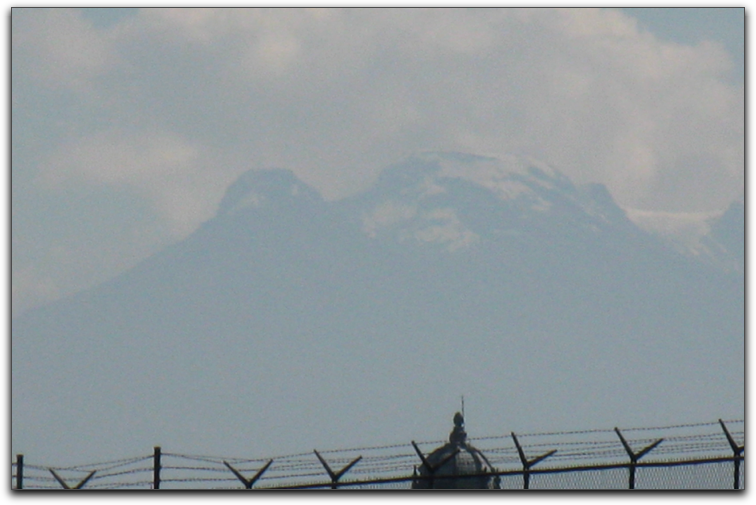
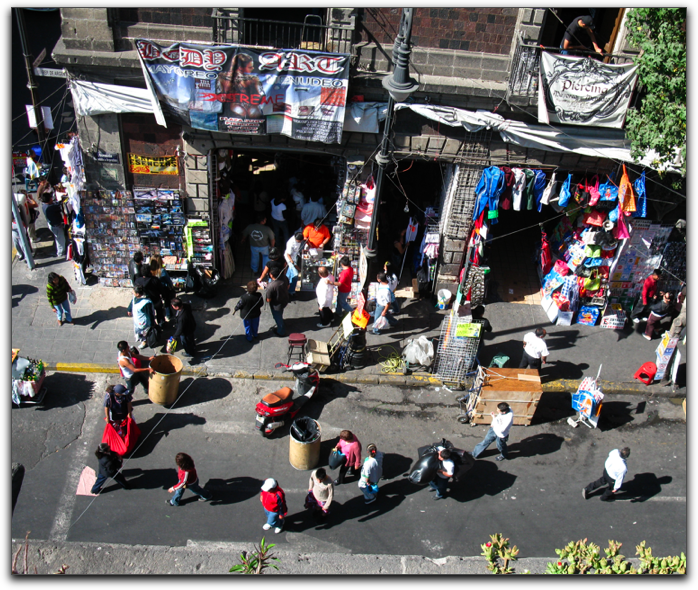
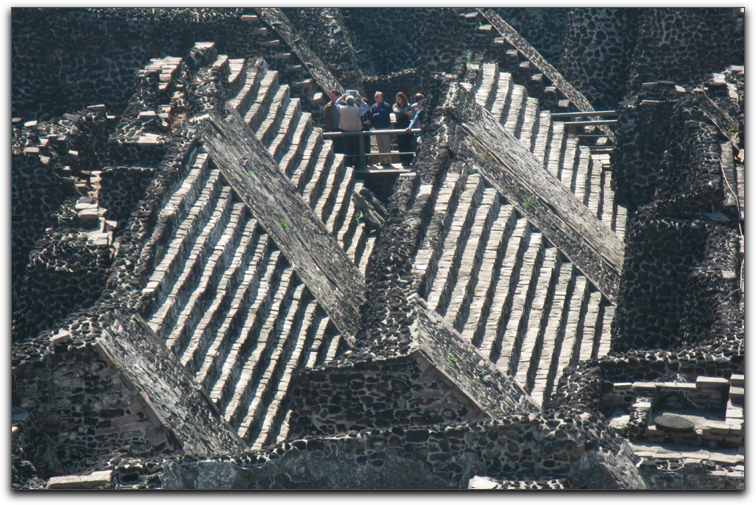
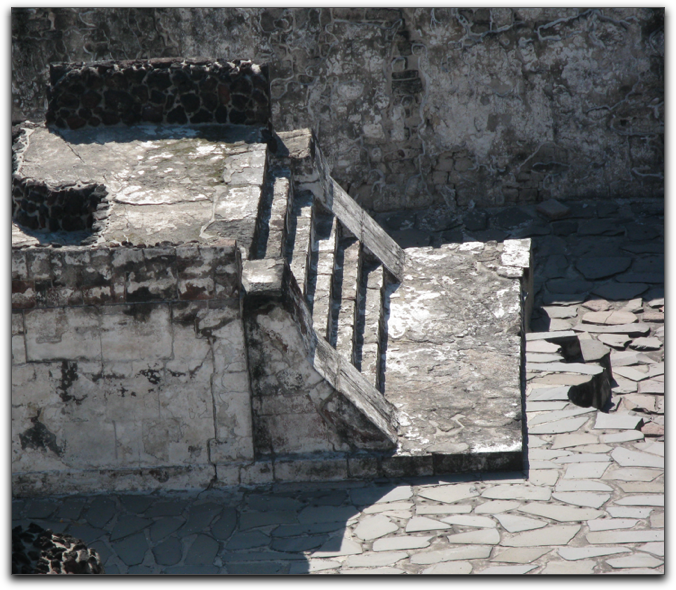
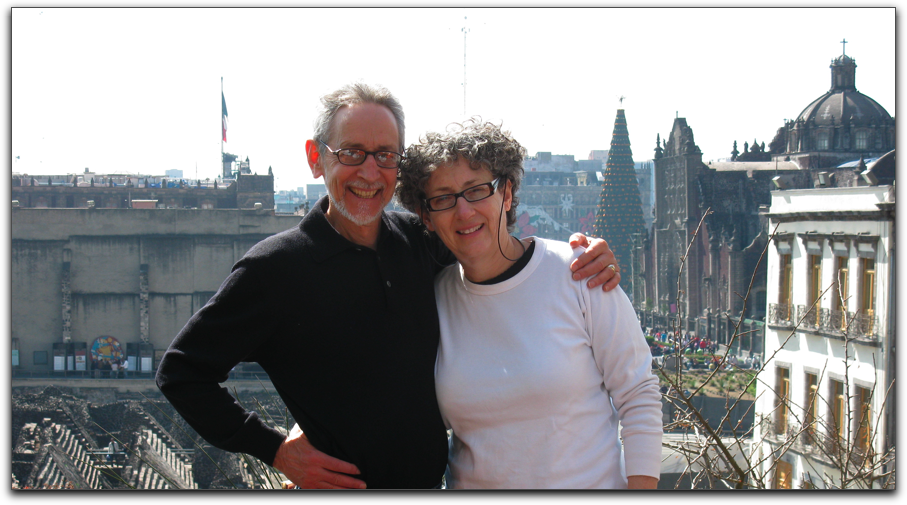
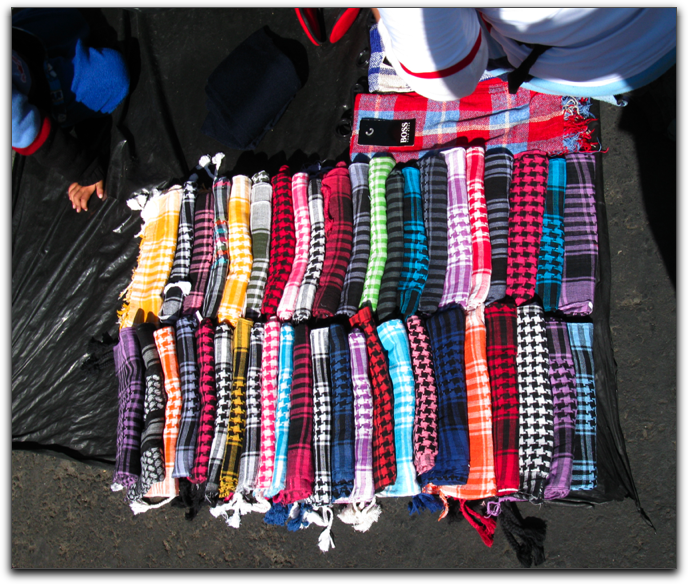
A friend in New York had asked us to bring back some Mexican "Orlando" vanilla. We searched in Oaxaca and in Mexico city. We asked in markets, in perfume shops, in pharmacies. Not one carried any quality liquid vanilla. This day we were directed to an arcade that was devoted to herbal medicinals on one side and Catholic religious articles on the other.
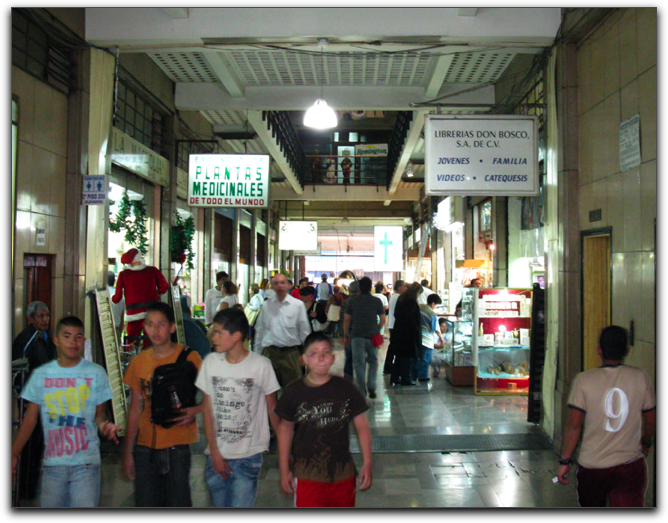
Among the various medicinal shops were a few herbalists who stocked all kinds of non-Catholic religious books and paraphernalia available.
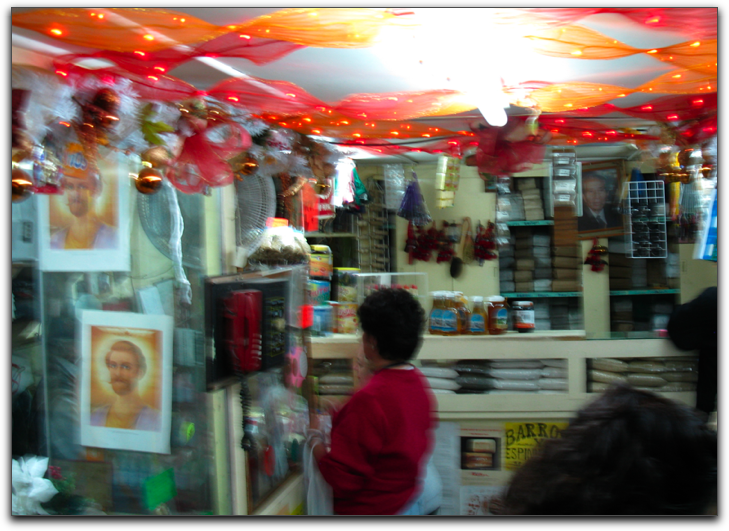
We finally broke down and bought a few vanilla beans from them. Nonetheless, we continued to hope for vanilla extract.
Luis had told us of a place try juice made of chia at the Plaza Santo Domingo. We were intrigued, knowing chia only as the fur of a unique pet. On our walk through the plaza we were pleasantly surprised to see letterpress printers
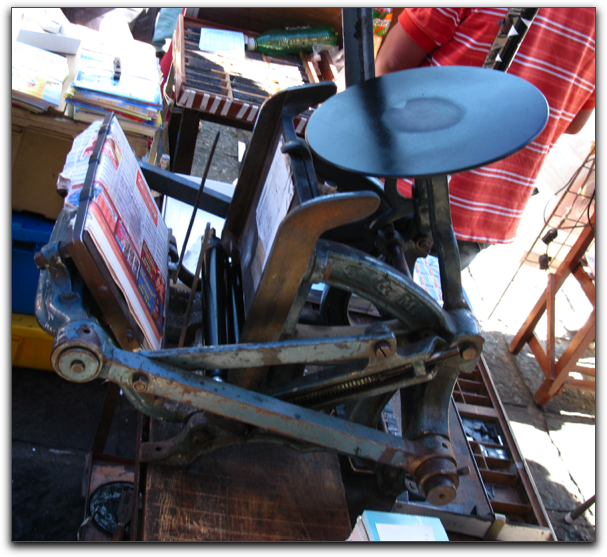
and young men setting lead type!
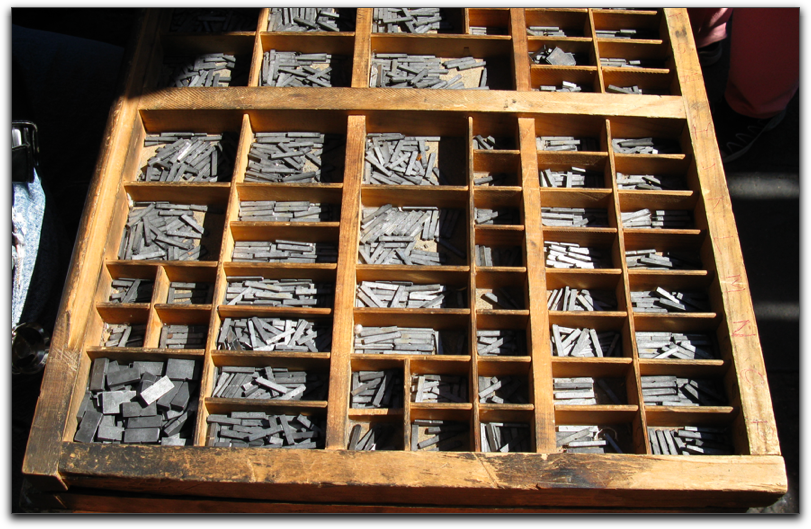
What was a bit unexpected was the plethora of little cards printed… from kiddie through adult subject matter.
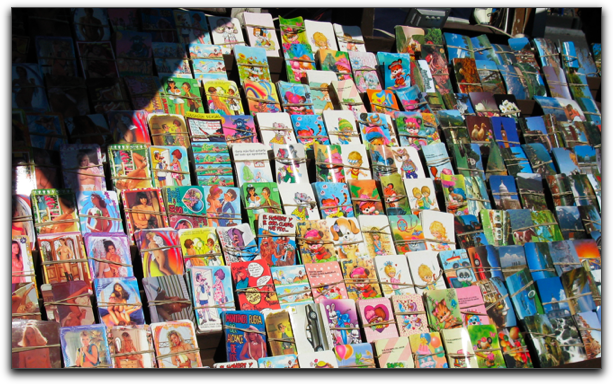
Around the block we passed through one rather run-down street to the street filled with jewelry concessionaires.
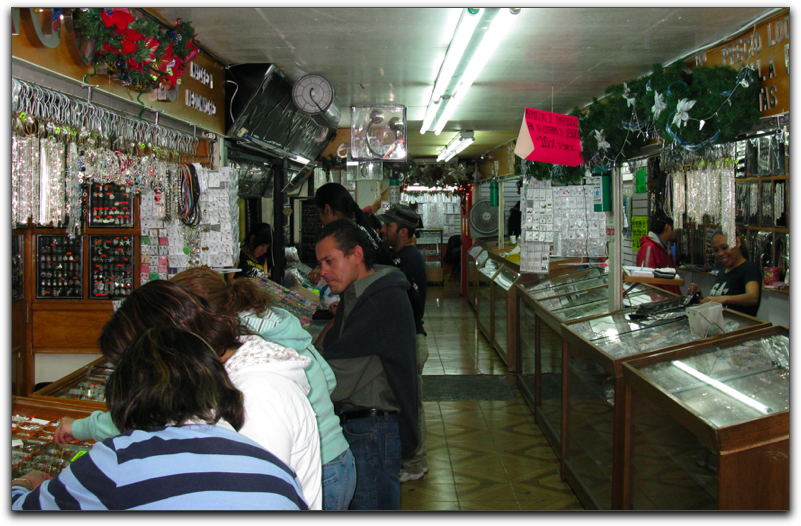
There, Debbie searched for some silver hoop earrings.
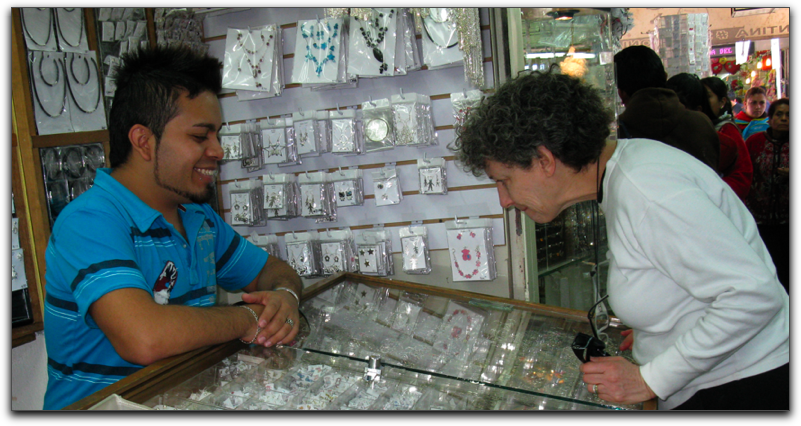
We saw some unusual buckles and bands on the other side of the street. Does the fact that the background is blue make the presence of the swastika here any less offensive?
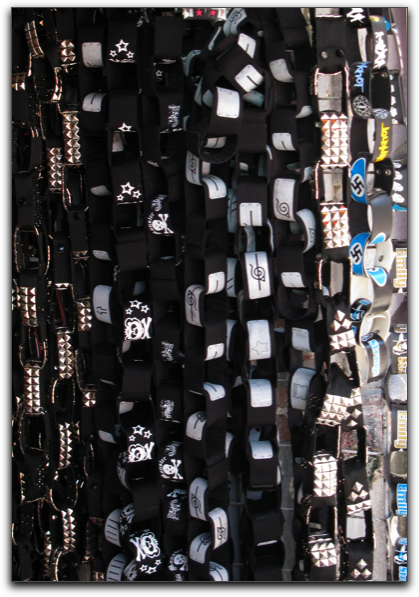
Barely a block away we saw someone wearing a pentagram patch sewn on upside down. We had noticed a variety of these in the "medical arcade". The use of these various symbols (both Nazi and Kabbalistic) made Mark wonder if all symbols have lost their meaning.
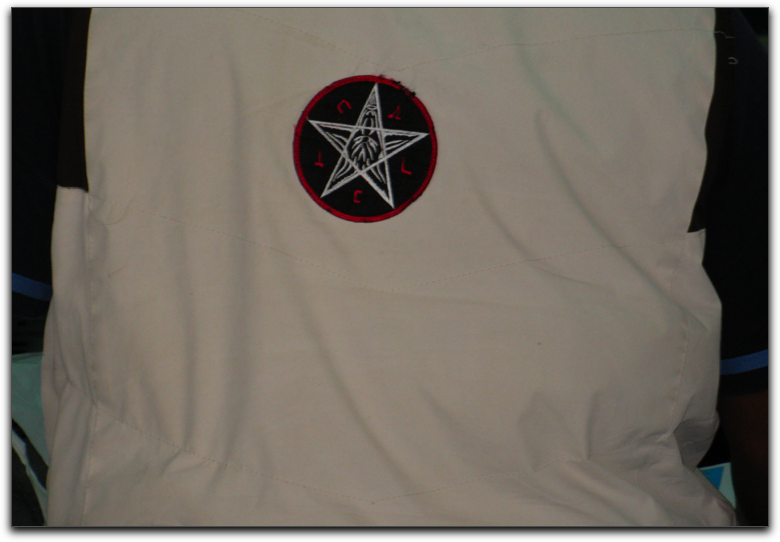
Then, back around the block again to a building that housed the museum of medicine.
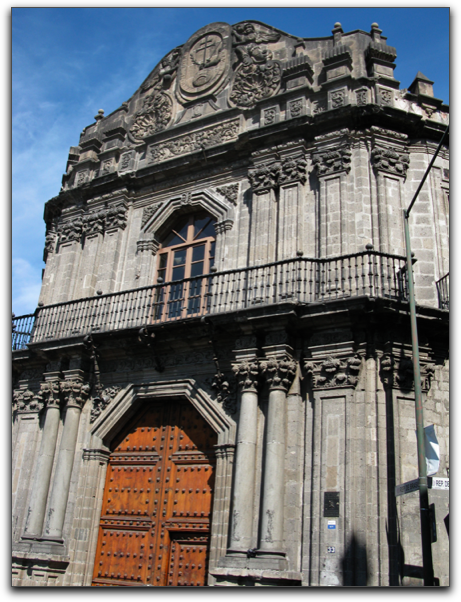
Because at one time chocolate had been distributed by apothecaries, we were interested to see what we could learn. However, once again we learned that this museum as well was closed for vacation. We did get a glance inside the door.
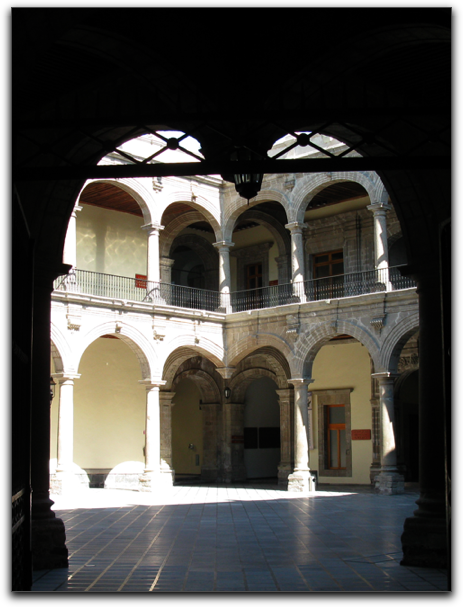
Our path led us back toward our lunch destination where we found another candy store. At the Chanukkah/Januca/H̱anukkah party in Oaxaca someone had brought Mexican, foil-wapped "Feliz Navidad" chocolate coins for the kids to play Dreidle. Intrigued by the thought we asked in a number of candy stores in Mexico City and finally found them here (where the proprietress stands behind the grate).
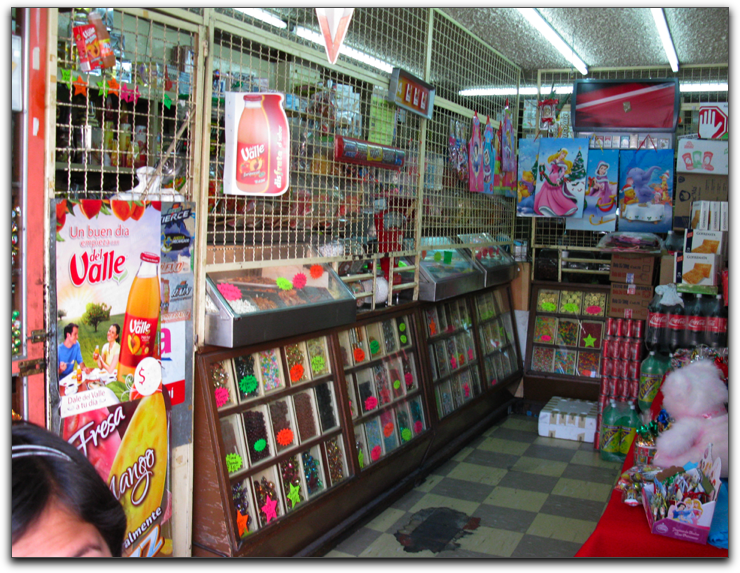
We then came upon a pastry shop that had some delicious sweets:
Truffles are pretty obvious, even in Spanish, but they ended up tasting like chocolate frosting.
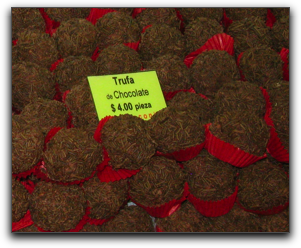
As are chocolate Danish cupcakes
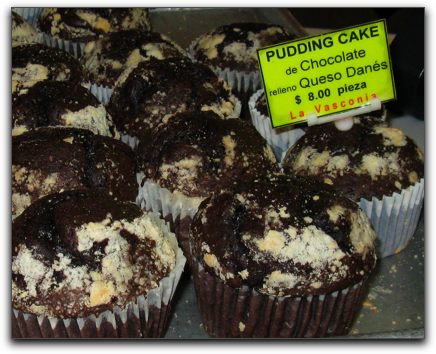
We were unfamiliar with the word "Tulipàn" even though it seems to be related to "tulip", its use in Latin American popular culture is significantly different.
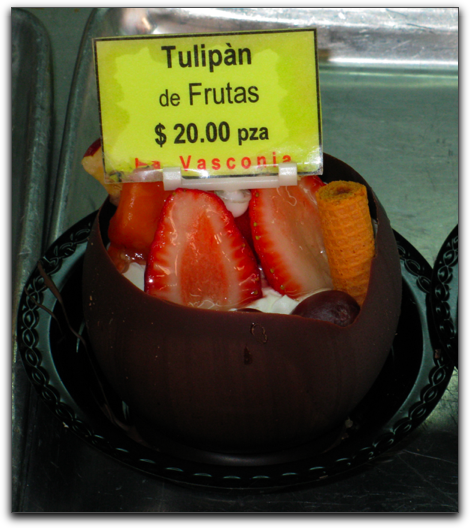
We were puzzled why anyone would buy and eat these unusual (and unappetizing) items in the same shop. Note that the label indicates that it is "con/with" not "de/of".
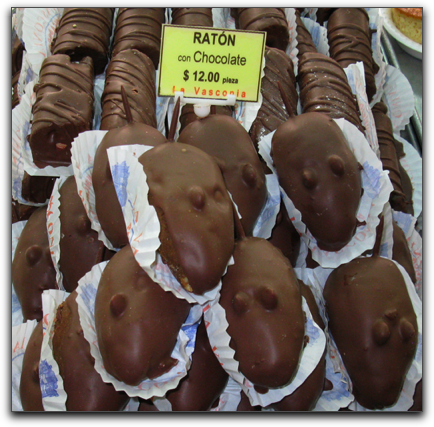
We made our way to the Museo Interactivo de Economia past another building with an intriguing facade (like one from the previous evening… though less elaborate).
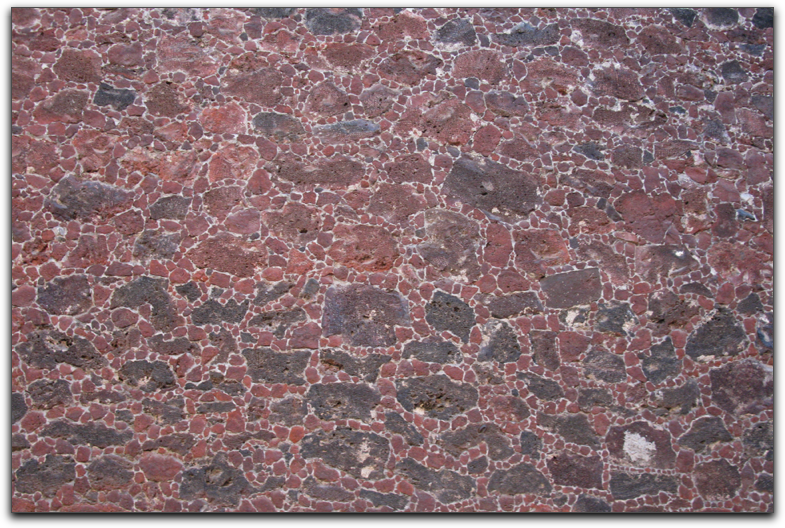
Because we knew that in pre-Columbian time cacao had been used as a medium of exchange we hoped to learn something there. While there were hints in the gift shop pointing to the association of cacao with money and wealth,
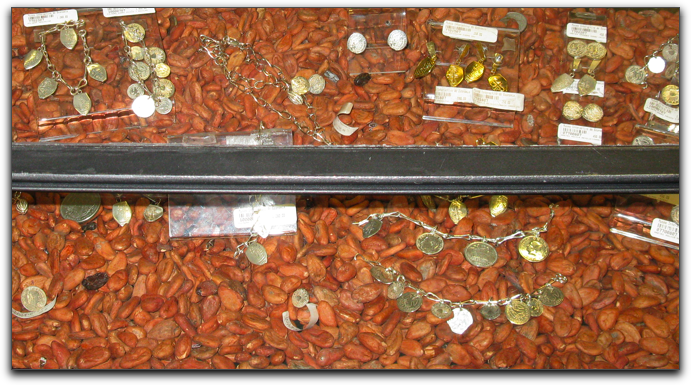
…a chocolate "ingot":
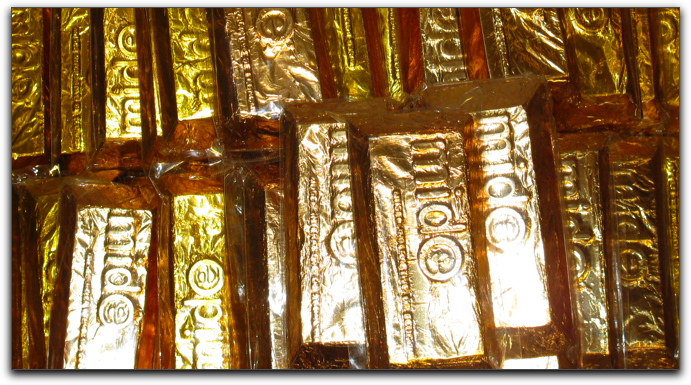
in the numismatic exhibit (where we could not take any photos) only one cacao bean appeared on display in the case with earliest colonial coins. And, after asking the young docent who guided us, and doing a bit more exploration on our own, that turned out to be the only reference to chocolate in the museum. The museum itself is brand new and its interactivity is intriguing. The fact that it is entirely in Spanish made it a bit difficult for us to explore.
Our English speaking guide wore a keffiyeh. Mark asked what it was called in Spanish. She was aware that it had a non-Spanish name she did not know. In Mexico it is called a Palestina. One of the other young guides wore a red button that had his name on it: Ari Ben. Mark asked if he spoke Hebrew. He indicated that he did, but only very minimally. Mark wanted the button, but knew he could not get it from him so he took his picture. It seemed a bit inappropriate to take only his picture, so Ari Ben is the second from the right.
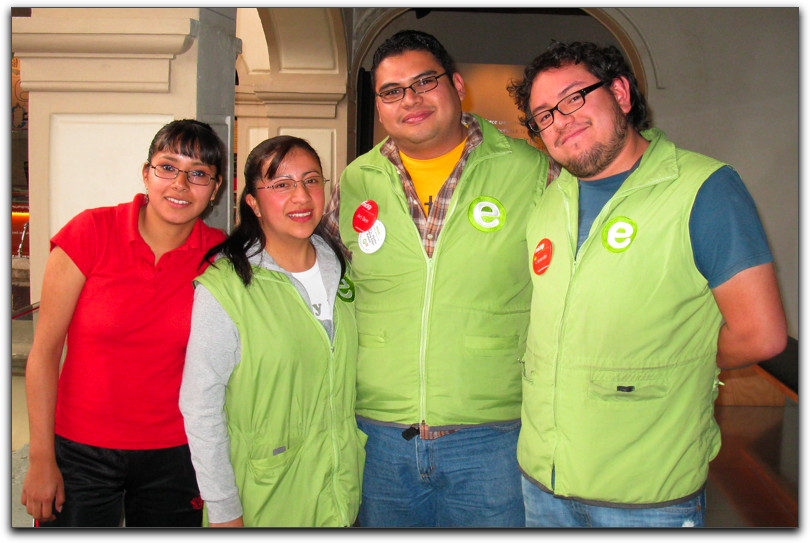
We stepped out of the museum and headed toward Sanborns but were intrigued by a leather-goods store with a fancy brass railing outside, named "Palestina," founded in 1884. 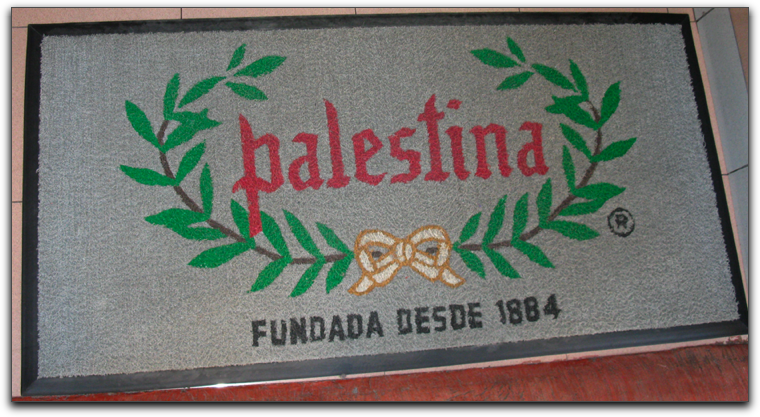
Returning to Sanborns to eat lunch in their formal restaurant. Mark had a delicious, deep red juice we were pretty sure was made of beets and oranges. Sanborns attempts to maintain a "traditional" atmosphere, dressing its waitresses quaintly, though the barmaids dress in modern garb.
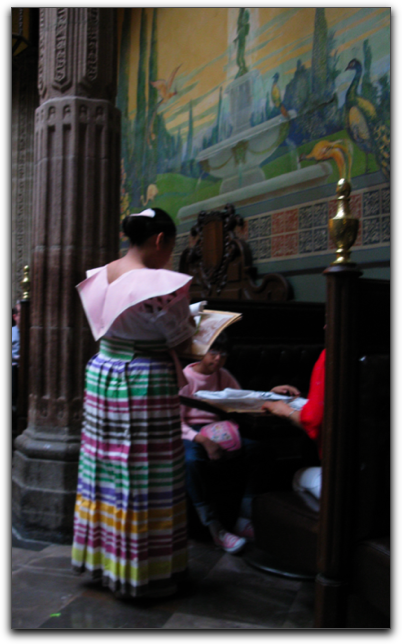
The view from our table:
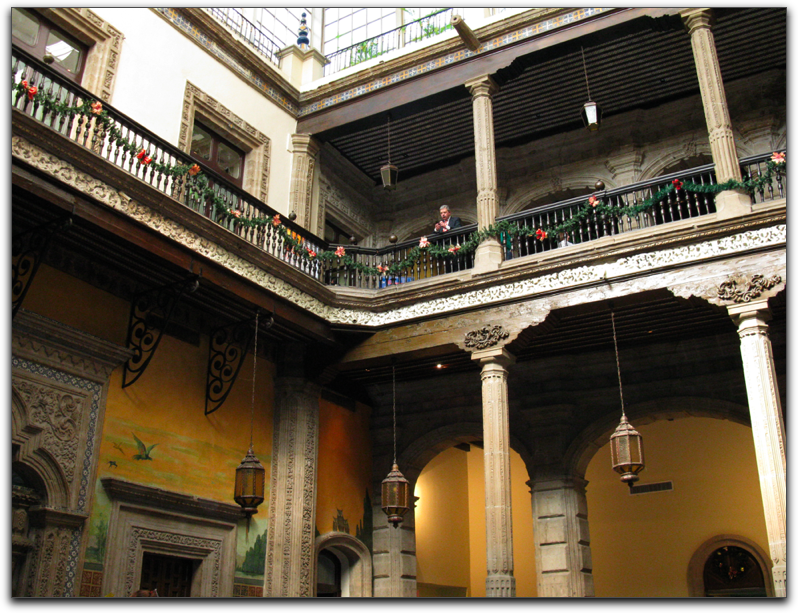
And the reverse:
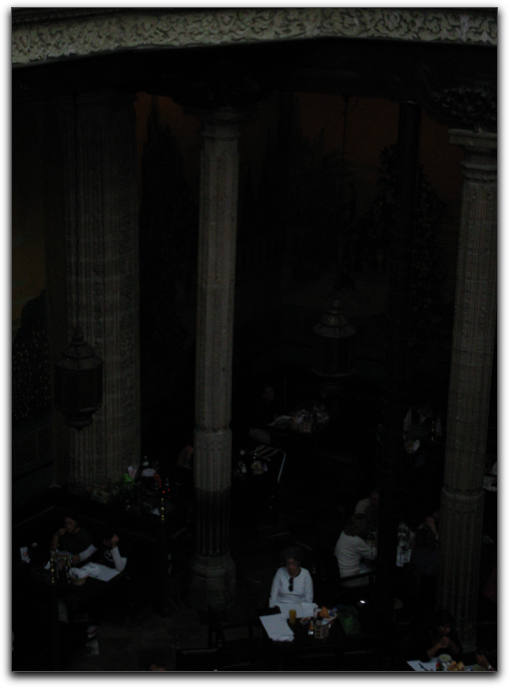
Mark was intrigued that they used "half napkins." The napkins were made of cloth, but instead of the usual squares, they were finished off as rectangles and could (and did) double as place mats. Aside from being famous for its elaborate tile facade, the building is known as the world's only pharmacy with a mural by Orozco.
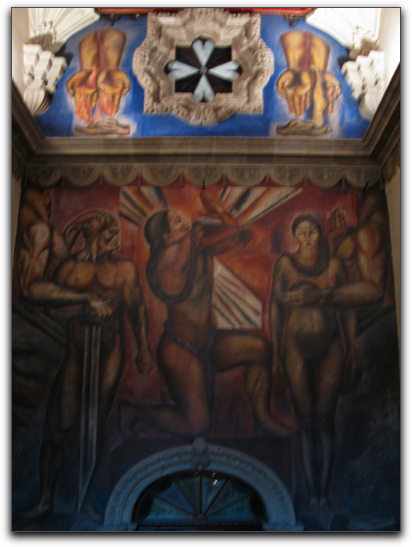
The day was young enough for us to attempt another museum. We caught the Metro at Bellas Artes and made an easy transfer to Chapultapec Park to see the National Museum of Anthropology and History which is among the museums there. As we approached we walked through a dense collection of vendors, among them someone selling bubble-blowing equipment. One little bubble got caught in Debbie's hair and she walked with it for about five minutes (on the right side of her face, corresponding to the left side of the photo).
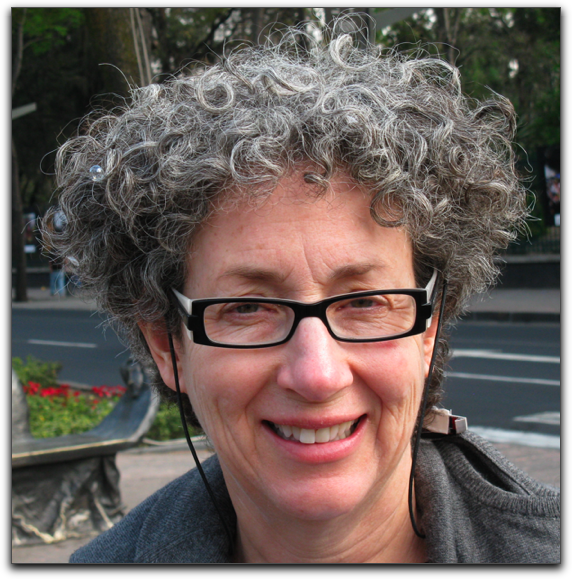
Someone volunteered to take our photo in the inside plaza of the museum (that's water falling behind us).
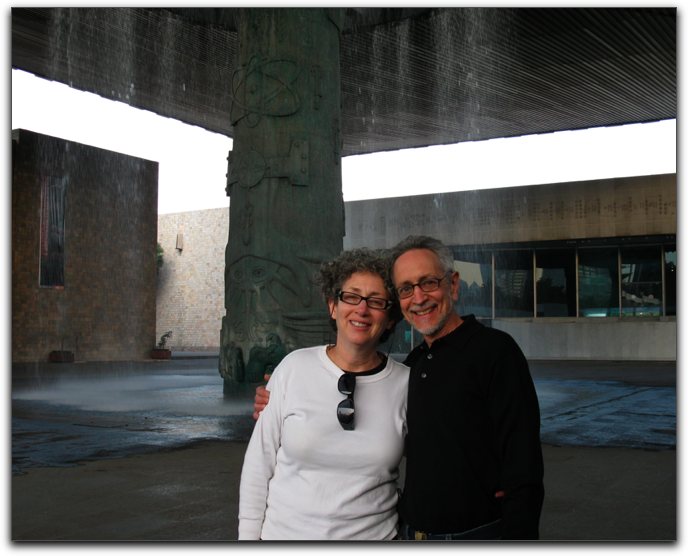
Debbie was able to learn the name and contact information of a librarian/archivist who might be able to give her more information. We saw a number of interesting items: artifacts, miniature reconstructions of the Mayan city, a painting depicting the pre-Columbian city in the midst of the lake which illustrates how impressive the "ancient" site was. We left near sunset,
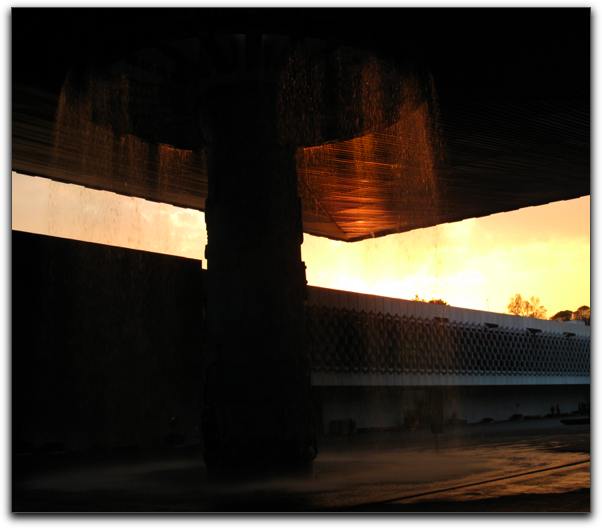
and walked up to Avenida Presidente Masaryk named for Tomáš Garrigue Masaryk the first president of Czechoslovakia which is supposedly the most-valued street in Latin America with the most boutique shops and is known as the Rodeo Dr. of Mexico City. Mark wondered how Masaryk himself would have felt knowing that his name was associated with such an upscale neighborhood. On the other hand, the area is also, pleasantly, filled with street-names of literary and intellectual greats (among them):
